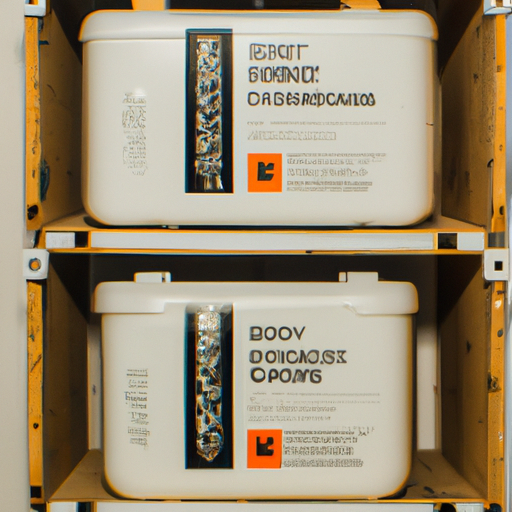Are you a drone enthusiast looking for tips on how to properly store your drone battery? In this article, we will explore the fundamentals of drone motor maintenance and provide you with essential information on how to store your drone battery to maximize its lifespan. Whether you are a beginner or have been using drones for a while, understanding the basics of drone motors and their care is crucial for optimal performance and longevity. So, let’s dive in and discover the best practices for storing your drone battery effectively.
How To Store A Drone Battery?
Drones have become increasingly popular in recent years, providing users with a unique way to capture stunning aerial footage and explore the world from above. However, while obtaining a drone can be an exciting experience, it is equally important to properly store and maintain its battery to ensure optimal performance and longevity. In this article, we will guide you through the process of storing a drone battery, step by step.
Choosing the Right Storage Environment
Before diving into the specifics of storing a drone battery, it is vital to choose the right storage environment. Ideally, the storage area should be cool, dry, and well-ventilated. Extreme temperatures can have a detrimental impact on the battery, so it is crucial to avoid storing it in locations that are subject to excessive heat or extreme cold.
Furthermore, it is recommended to store the battery in a location with minimal exposure to direct sunlight. Ultraviolet rays can lead to accelerated battery degradation, reducing its overall performance and lifespan. Consequently, finding a dark or dimly lit area for storage is highly advisable.
Preparing the Battery for Storage
Once you have identified an appropriate storage environment, it is time to prepare the battery for storage. Begin by ensuring the battery is fully charged. Leaving the battery partially discharged for an extended period can cause irreversible damage, significantly reducing its lifespan. Therefore, it is essential to charge the battery to its maximum capacity before moving on to the next step.
Cleaning and Inspecting the Battery
Before storing the battery, it is crucial to clean and inspect it for any signs of damage or wear. Gently wipe the battery using a clean, dry cloth to remove any dust or debris that may have accumulated. Take the time to inspect the battery for any visible swelling, corrosion, or leaks. If any of these issues are present, it is advisable to replace the battery rather than storing a potentially hazardous component.
Discharging the Battery to the Recommended Level
While it is generally best to store a lithium-polymer (LiPo) drone battery at around a 50% charge, different manufacturers may have varying recommendations. Therefore, it is crucial to consult your drone’s user manual or the battery manufacturer’s guidelines to identify the optimal storage charge level. By discharging the battery to the recommended level, you can mitigate the risk of over-discharge during storage, which could lead to irreparable damage.
Removing the Battery from the Drone
Before proceeding with storing the battery, it is essential to remove it from the drone. Ensure the drone is powered off and safely disconnect the battery connectors. Removing the battery from the drone prevents any potential energy loss or discharge drain, further safeguarding the battery’s overall health and performance during storage.
Disconnecting the Battery from the Drone
In addition to physical removal, it is crucial to disconnect the battery from the drone. Most modern drones have intelligent battery systems that automatically power down or enter a low-power standby mode when not in use. However, to prevent any unintentional battery drain, it is still recommended to disconnect the battery to guarantee its charge is preserved during storage.
Storing the Battery in a Fireproof Container
Safety is of paramount importance when storing drone batteries. Due to the nature of lithium-ion batteries, there is a small risk of thermal runaway or fire if mishandled or subjected to extreme conditions. To minimize this risk, it is strongly recommended to store drone batteries in a fireproof container specifically designed for battery storage. These containers are capable of containing any potential fires, providing an added layer of protection for both the battery and the storage environment.
Avoiding Extreme Temperatures
Extreme temperatures, both hot and cold, pose significant risks to drone batteries. Exposure to excessive heat can accelerate the degradation of the battery’s internal components, while extreme cold can reduce overall performance and potentially cause irreversible damage. Therefore, it is vital to store drone batteries in an environment with stable temperatures, away from direct sources of heat or extreme cold.
Checking the Battery Regularly
Even when in storage, it is important to regularly check the condition of the battery. Every few weeks, inspect the battery for any visible signs of damage or deterioration. Be on the lookout for any unusual odors, leaks, or swelling, as these may indicate a compromised battery that should be immediately replaced. By regularly checking the battery, you can address any potential issues promptly and ensure the battery remains in optimal condition throughout its storage period.
Returning a Stored Battery to Use
When the time comes to use the stored battery again, it is vital to follow a few essential steps. Begin by inspecting the battery for any damage or wear, as well as ensuring it is free from any dust or debris. Next, check the battery’s charge level to ensure it has been properly stored at the recommended storage charge level. If the battery has self-discharged beyond the recommended level, it may be necessary to recharge it before use. Finally, reattach the battery to the drone, ensuring all connections are secure and properly aligned.
In conclusion, proper storage of a drone battery is crucial to maintain its performance and extend its lifespan. By choosing the right storage environment, preparing the battery correctly, and following recommended storage procedures, you can ensure your drone battery remains in optimal condition, ready to power your future flights. Remember, taking care of your battery is an investment in the longevity and reliability of your drone, so don’t underestimate the importance of proper storage.

